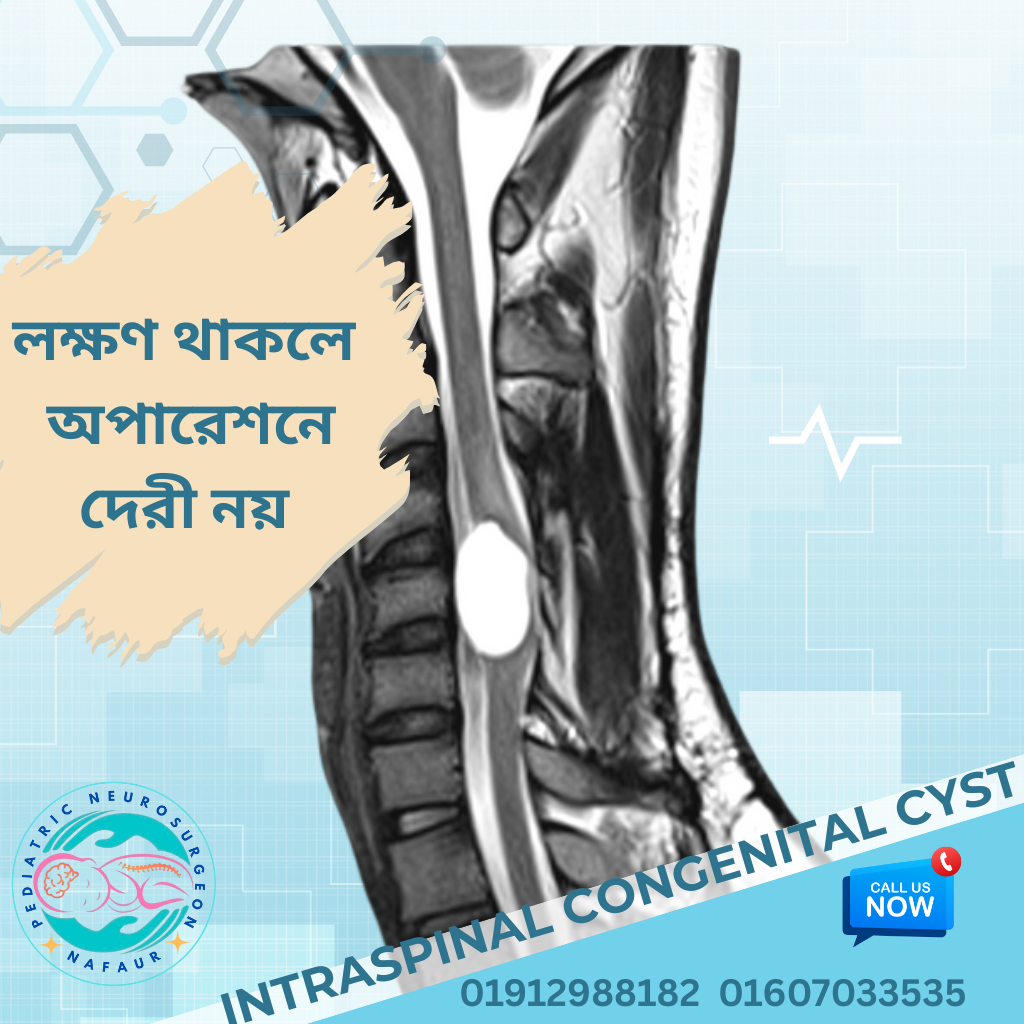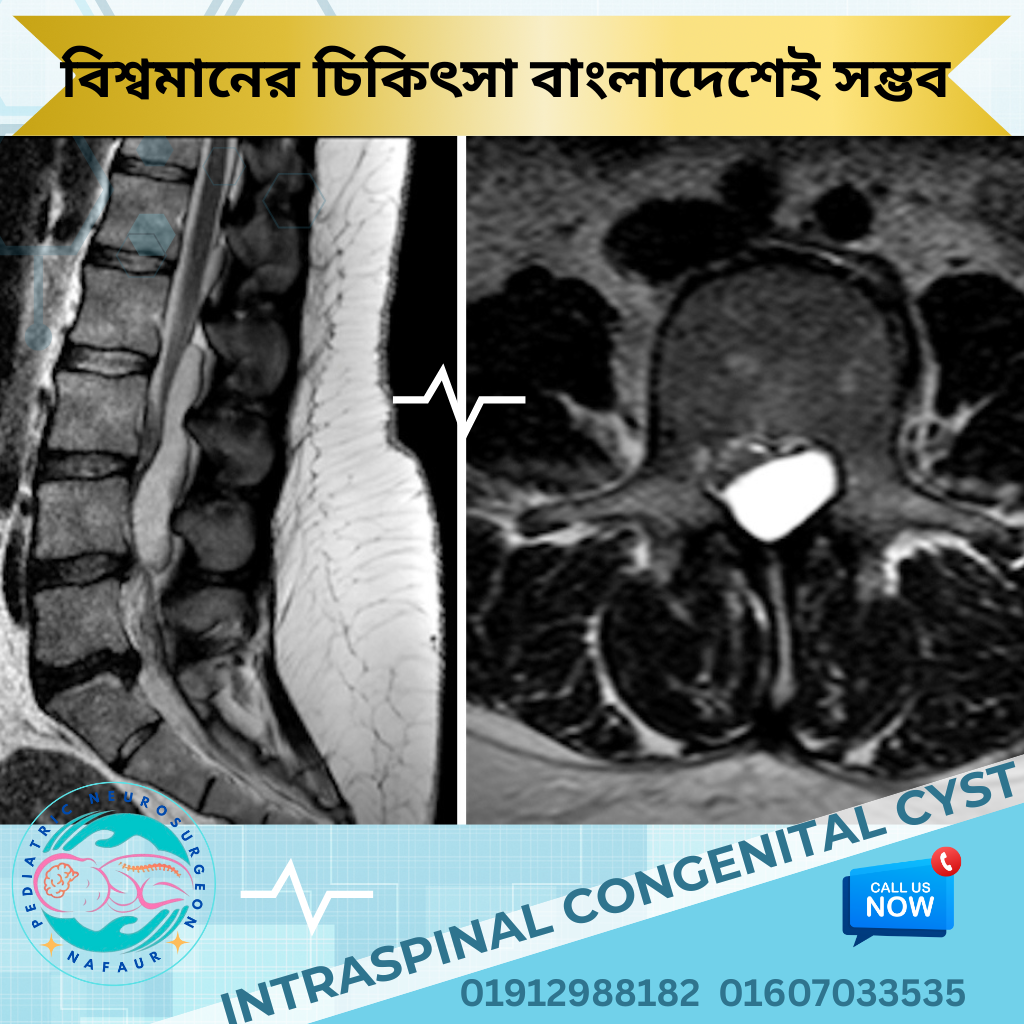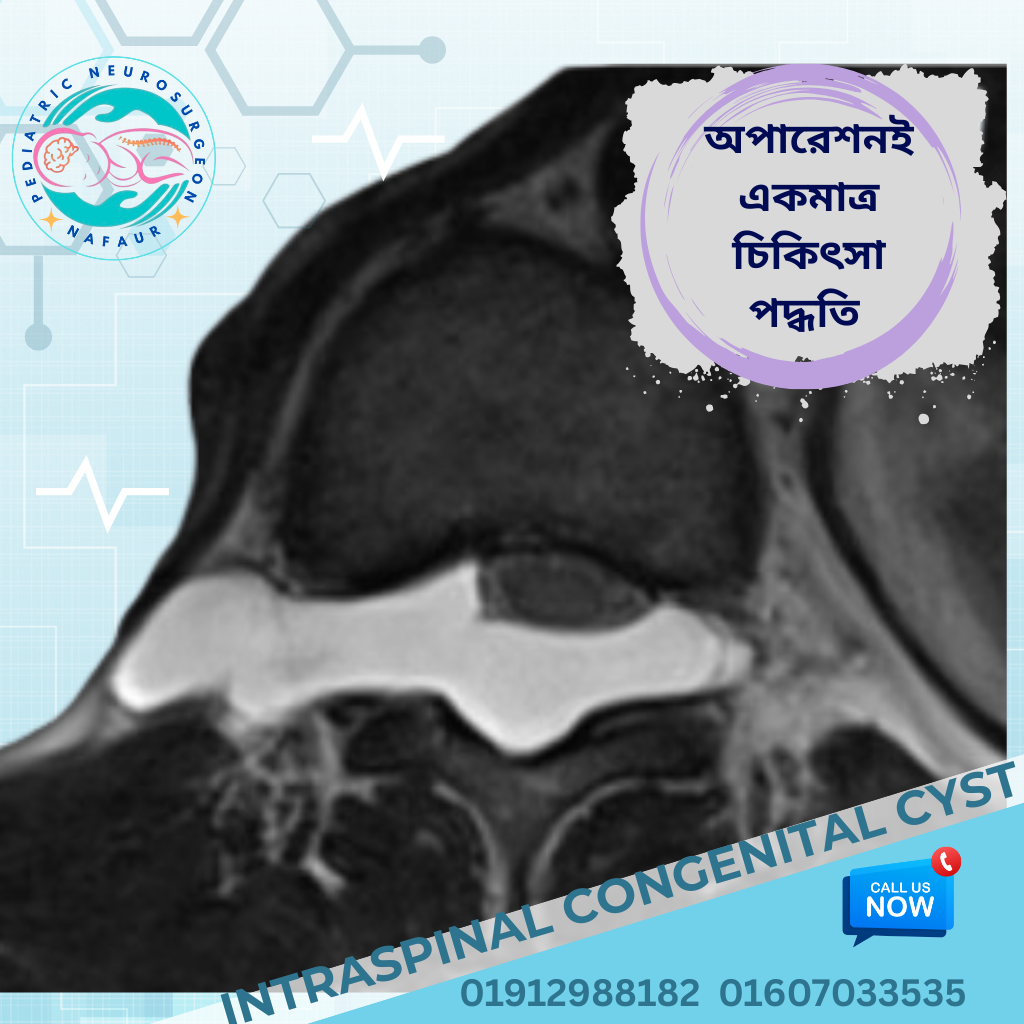Intraspinal Congenital Cyst
Intraspinal Congenital Cyst
An Intraspinal Congenital Cyst is a fluid-filled sac that forms within or adjacent to the spinal canal due to abnormal embryonic development. These cysts are present at birth and may remain asymptomatic for years or cause progressive neurological symptoms due to spinal cord or nerve compression. Although relatively rare, such cysts are a critical consideration in pediatric neurosurgery, especially in patients with delayed motor milestones, back pain, or limb weakness.
In Bangladesh, low awareness, limited access to pediatric spinal MRI, and scarcity of pediatric neurosurgical specialists make the early detection and management of intraspinal congenital cysts a challenging task, especially in rural regions.
🧬 Types of Intraspinal Congenital Cysts
Several types of congenital cystic lesions can develop in the spinal region:
Arachnoid cyst – Formed from the arachnoid membrane; may be intradural or extradural
Dermoid cyst – Contains skin elements (hair, sebum); may rupture or become infected
Epidermoid cyst – Lined by epithelial cells; usually slow-growing
Neurenteric cyst – Rare cysts related to abnormal development of the gut and spine
Tarlov cyst (perineural cyst) – Found near the nerve roots in the sacral region
Enterogenous cysts – Congenital and sometimes associated with vertebral anomalies
Each type of cyst requires accurate diagnosis, differential imaging, and tailored surgical planning, which are now increasingly accessible in Bangladesh under specialists like Dr. Nafaur Rahman.
🔍 Signs and Symptoms in Children
Although some intraspinal cysts may be discovered incidentally, others present with symptoms due to compression of the spinal cord or nerves:
Back or leg pain
Limb weakness or asymmetry
Gait disturbance or unsteady walking
Numbness, tingling, or sensory deficits
Bladder and bowel dysfunction
Spinal deformities or scoliosis
Delayed gross motor development
In Bangladesh, these symptoms are often misattributed to orthopedic or general pediatric issues, delaying proper neurosurgical referral.
🧪 Diagnostic Evaluation
Accurate and early diagnosis of congenital intraspinal cysts depends on:
MRI of the spine – Gold standard for visualizing cyst location, size, and effect on neural tissue
CT scans – Useful in identifying associated bony anomalies
Ultrasound (in neonates) – Initial tool before fontanelle or spine closure
X-rays – May suggest associated skeletal anomalies
At NINS and Bangladesh Paediatric Neurocare Centre, Dr. Md. Nafaur Rahman ensures access to high-quality imaging, with expert interpretation and clinical correlation for precise diagnosis.
🧠 Neurosurgical Management of Intraspinal Cysts
Surgical intervention is considered in:
Symptomatic cysts causing neurological impairment
Rapidly growing cysts
Cysts that compress the spinal cord or roots
Associated tethered cord or congenital spinal malformations
🛠️ Common Surgical Approaches Include:
Microsurgical cyst excision or fenestration
Laminectomy or laminoplasty to access deep-seated lesions
Cord detethering, if the cyst is linked to tethered cord syndrome
Dural repair and cerebrospinal fluid (CSF) leak prevention
Neurophysiological monitoring (IONM) during surgery for nerve protection
“Early surgical treatment of congenital intraspinal cysts can restore function and prevent long-term disability. With improved neurosurgical facilities in Bangladesh, these outcomes are now within reach.”
— Dr. Md. Nafaur Rahman
🏥 Postoperative Care and Long-Term Outcomes
Children undergoing surgery for intraspinal cysts require:
Close postoperative monitoring for neurological function
Wound care and infection prevention
Follow-up MRIs to assess recurrence or regrowth
Physical rehabilitation to regain strength and mobility
Bladder and bowel management if dysfunction was present
Dr. Nafaur’s team provides comprehensive long-term care through integrated neurosurgical, physiotherapy, and urological services, making his centers in Dhaka ideal for follow-up and monitoring.
🌟 Prognosis After Surgery
With timely and effective surgical intervention:
Most children experience improvement in neurological symptoms
Progression of disability is halted
Quality of life, school participation, and independence are significantly enhanced
Recurrence is rare with complete excision and adequate follow-up
However, delay in treatment, particularly in under-resourced regions of Bangladesh, may lead to permanent deficits, making early detection and referral vital.


Common Intraspinal Congenital Cyst















